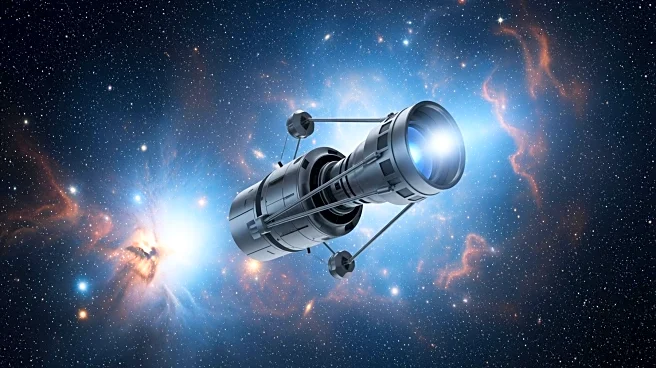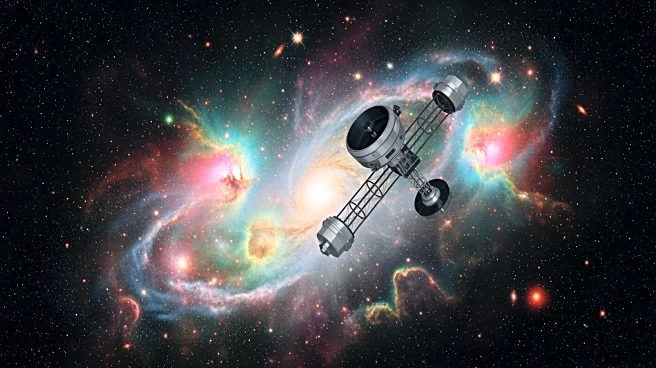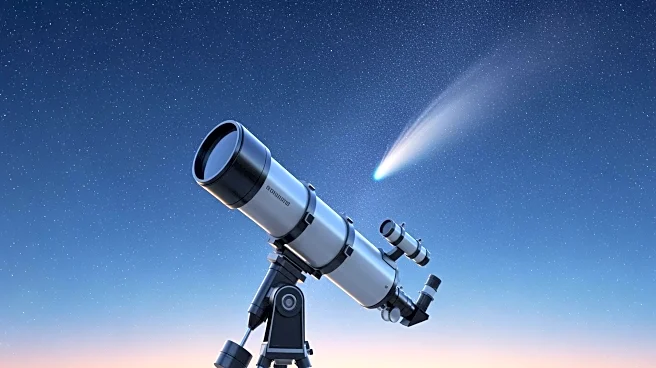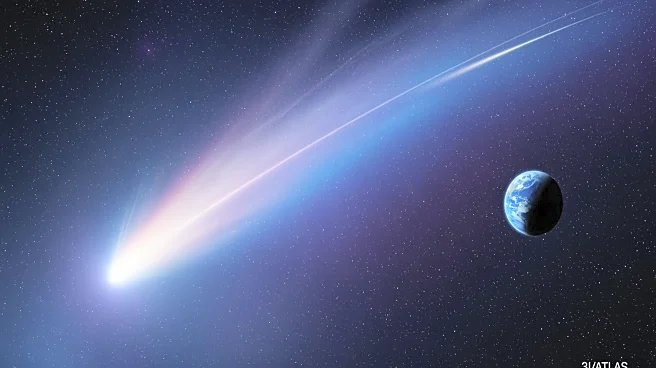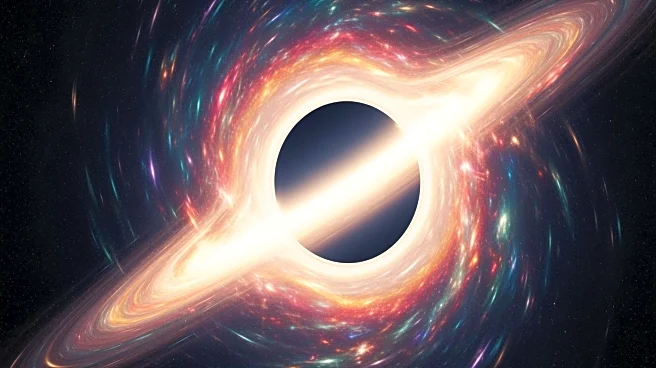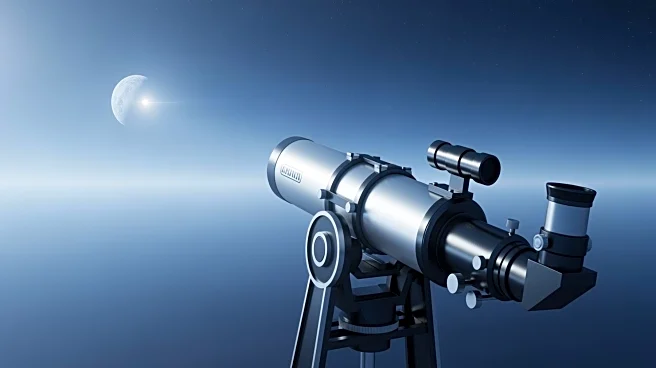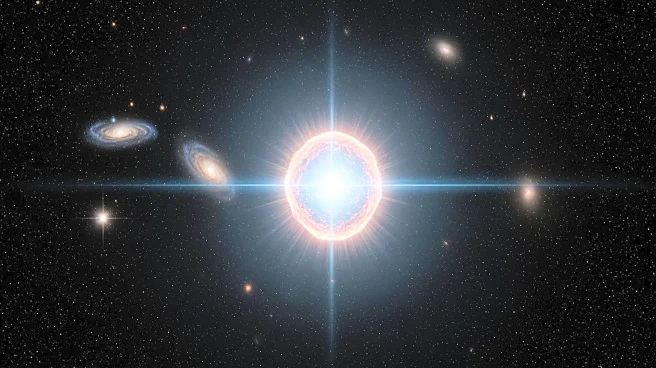What's Happening?
NASA's James Webb Space Telescope has provided unprecedented images of the Sagittarius B2 molecular cloud, the most active star-forming region in the Milky Way galaxy. Located near the supermassive black
hole Sagittarius A*, this region is densely packed with stars and complex magnetic fields. The telescope's infrared instruments have revealed details previously unseen, aiding in the understanding of massive star formation. The images show young stars and warm cosmic dust, although some areas remain dark due to dense gas and dust clouds. These clouds are the raw material for future stars, serving as a cocoon for those too young to shine.
Why It's Important?
The insights from the James Webb Space Telescope are crucial for advancing the understanding of star formation processes in the galaxy. By revealing the intricate details of Sagittarius B2, scientists can study the conditions that lead to the birth of stars, which has implications for astrophysics and cosmology. This knowledge can enhance models of galactic evolution and contribute to the broader understanding of the universe's structure. The ability to see through dense cosmic dust also opens new avenues for exploring other star-forming regions, potentially leading to discoveries about the lifecycle of stars and the formation of planetary systems.
What's Next?
The data from the James Webb Space Telescope will continue to be analyzed by astronomers, potentially leading to new theories about star formation and galactic dynamics. Future observations may focus on other regions of the Milky Way or even other galaxies, using the telescope's advanced capabilities to uncover more cosmic phenomena. As researchers delve deeper into the data, collaborations between institutions like NASA and universities will likely expand, fostering further scientific advancements and public interest in space exploration.
Beyond the Headlines
The exploration of Sagittarius B2 by the James Webb Space Telescope highlights the importance of technological advancements in astronomy. The ability to penetrate dense cosmic dust with infrared imaging represents a significant leap forward, allowing scientists to explore regions previously obscured. This technological progress not only aids scientific discovery but also inspires future generations to pursue careers in science and technology, emphasizing the cultural and educational impact of space exploration.
